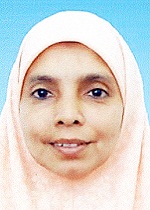Magic or Morgellons: How their Microbiome might make Morgellons Patients 'Magic'
Keywords:
Abstract
Although there is no scientifically reported evidence of a link between Morgellons Disease (MD) and electromagnetism, this article investigates the possible causes if different bacterial organisms to be implicated in the etiology of MD. Spirochetes, for example, the suggested main pathogen linked to MD, are electroactive and, if indeed are the underlying pathology, could cause chemical precipitation of calcium carbonate crystals, resulting in increased electrical conductivity. Microbiotas such as E.coli, Shewanella, and Listeria have previously been related to electroactive characteristics. Furthermore, the bacteria-induced deposition of pyrite, calcium carbonate, calcium alginate, and magnetite in the epidermis could explain some MD patients' inexplicable symptoms. While only some of these microorganisms are proven in MD patients, the exact etiology of the disease is yet to be determined. It's possible that we'll never find a link at all, but that doesn't rule out the possibility that one exists in the first place. In this review, we attempt to suspend disbelief that MD patients could exhibit such symptoms, and instead investigate how researchers could support their claims with science and compassion, instead of repudiating them.
References
Kellett CE. Sir Thomas Browne and the disease called Morgellons. Ann Med Hist. 1935;7:467–479
Freudenmann RW, Kölle M, Schönfeldt-Lecuona C, Dieckmann S, Harth W, Lepping P. Delusional parasitosis and the matchbox sign revisited: the international perspective. Acta Derm Venereol. 2010;90(5):517–519. DOI: https://doi.org/10.2340/00015555-0909
Pearson ML, Selby JV, Katz KA, et al. Clinical, epidemiologic, histopathologic and molecular features of an unexplained dermopathy. PLoS One. 2012;7(1):e29908 DOI: https://doi.org/10.1371/journal.pone.0029908
Middelveen MJ, Fesler MC, Stricker RB. History of Morgellons disease: from delusion to definition. Clin Cosmet Investig Dermatol. 2018 Feb 9;11:71-90. DOI: https://doi.org/10.2147/CCID.S152343
Middelveen MJ, Stricker RB. Morgellons disease: a filamentous borrelial dermatitis. Int J Gen Med. 2016;9:349–354. DOI: https://doi.org/10.2147/IJGM.S116608
Savely VR, Stricker RB. Morgellons disease: Analysis of a population with clinically confirmed microscopic subcutaneous fibers of unknown etiology. Clin Cosmet Investig Dermatol. 2010 May 13;3:67-78. DOI: 10.2147/ccid.s9520. PMID: 21437061; PMCID: PMC3047951. DOI: https://doi.org/10.2147/CCID.S9520
Middelveen MJ, Mayne PJ, Kahn DG, Stricker RB. Characterization and evolution of dermal filaments from patients with Morgellons disease. Clin Cosmet Investig Dermatol. 2013;6:1–21. DOI: https://doi.org/10.2147/CCID.S39017
Middelveen MJ, Burugu D, Poruri A, et al. Association of spirochetal infection with Morgellons disease. F1000Res. 2013;2:25 DOI: https://doi.org/10.12688/f1000research.2-25.v1
Middelveen MJ, Bandoski C, Burke J, et al. Exploring the association between Morgellons disease and Lyme disease: identification of Borrelia burgdorferi in Morgellons disease patients. BMC Dermatol. 2015;15:1 DOI: https://doi.org/10.1186/s12895-015-0023-0
Mayne P, English JS, Kilbane EJ, Burke JM, Middelveen MJ, Stricker RB. Morgellons: a novel dermatological perspective as the multisystem infective disease borreliosis. F1000Res. 2013;2:118 DOI: https://doi.org/10.12688/f1000research.2-118.v1
Bandoski C. Evidence for the presence of human pathogens Borreliaand Helicobacterin Morgellons patients’ skin samples; Presented at: 7th Annual Medical-Scientific Conference on Morgellons Disease; March 29–30, 2014; Austin, TX. [Accessed September 30, 2016]. Available from: http://www.thecehf.org/cheryl-bandoski.html.
Allen L, Saylor-Hefley C. Morgellons under investigation: identification of associated microorganisms by molecular analysis of epithelial samples; Presented at: 7th Annual Medical-Scientific Conference on Morgellons Disease; March 29–30, 2014; Austin, TX. [Accessed September 30, 2016]. Available from: http://www.thecehf.org/resources/OSU%20_2015%20_Research.pdf.
https://nature.berkeley.edu/classes/eps2/wisc/pyrite.html
Saad S. Alarifi, et al. Gravity, aeromagnetic and electromagnetic study of the gold and pyrite mineralized zones in the Haile Mine area, Kershaw, South Carolina. Journal of Applied GeophysicsVolume 164, May 2019, Pages 117-129 DOI: https://doi.org/10.1016/j.jappgeo.2019.03.011
Berg, J.S., Duverger, A., Cordier, L. et al. Rapid pyritization in the presence of a sulfur/sulfate-reducing bacterial consortium. Sci Rep 10, 8264 (2020). https://doi.org/10.1038/s41598-020-64990-6 DOI: https://doi.org/10.1038/s41598-020-64990-6
Abram B. Stavitsky. CHARACTERISTICS OF PATHOGENIC SPIROCHETES AND SPIROCHETOSES WITH SPECIAL REFERENCE TO THE MECHANISMS OF HOST RESISTANCE. Bacteriological Reviews/ Vol. 12, No. 3 DOI: https://doi.org/10.1128/br.12.3.203-255.1948
de Guzman RC, Tsuda SM, Ton MT, Zhang X, Esker AR, Van Dyke ME. Binding Interactions of Keratin-Based Hair Fiber Extract to Gold, Keratin, and BMP-2. PLoS One. 2015 Aug 28;10(8):e0137233. DOI: 10.1371/journal.pone.0137233. PMID: 26317522; PMCID: PMC4552821. DOI: https://doi.org/10.1371/journal.pone.0137233
Morozova S, Muthukumar M. Electrostatic effects in collagen fibril formation. J Chem Phys. 2018 Oct 28;149(16):163333. DOI: 10.1063/1.5036526. PMID: 30384716. DOI: https://doi.org/10.1063/1.5036526
https://www.transitieweb.nl/mirror-carnicom-institute/category/disciplines/electromagnetics/
Andrew Michrowski. Electromagnetic fields: High-level microwave technology concerns. Retrieved from http://media.withtank.com/81d0a1eeb1.pdf
Andreas Teske. Cable bacteria, living electrical conduits in the microbial world. PNAS September 17, 2019 116 (38) 18759-18761 DOI: https://doi.org/10.1073/pnas.1913413116
https://www.scientificamerican.com/article/how-do-electric-eels-gene/
Cameron Fisher, et al. Effects of electromagnetic fields on marine species: A literature review. Retrieved from https://tethys.pnnl.gov/sites/default/files/publications/Effects_of_Electromagnetic_Fields_on_Marine_Species.pdf
https://flipper.diff.org/app/items/info/6357
https://www.livescience.com/63569-gut-bacteria-produces-electricity.html
Sandy L. Calderon, et al. Electrical energy generation in a double-compartment microbial fuel cell using Shewanella spp. strains isolated from Odontesthes regia. Sustainable Environment Research volume 30, Article number: 31 (2020) DOI: https://doi.org/10.1186/s42834-020-00073-5
Marianne J. Middelveen, et al. Mixed Borrelia burgdorferi and Helicobacter pylori Biofilms in Morgellons Disease Dermatological Specimens. Healthcare 2019, 7(2), 70 DOI: https://doi.org/10.3390/healthcare7020070
Ali N, Anam M, Yousaf S, Maleeha S, Bangash Z. Characterization of the Electric Current Generation Potential of the Pseudomonas aeruginosa Using Glucose, Fructose, and Sucrose in Double Chamber Microbial Fuel Cell. Iran J Biotechnol. 2017 Dec 29;15(4):216-223. DOI: 10.15171/ijb.1608. PMID: 29845073; PMCID: PMC5903908. DOI: https://doi.org/10.15171/ijb.1608
Stephens Elizabeth, et al. Spirochetes and salt marsh microbial mat geochemistry: Implications for the fossil record. February 2008Carnets de Geologie CG2008(Articles) DOI: https://doi.org/10.4267/2042/20045
Xiangshuo Wang, et al. In situ formation of surface-functionalized ionic calcium carbonate nanoparticles with liquid-like behaviours and their electrical properties. January 2018Royal Society Open Science 5(1):170732 DOI: https://doi.org/10.1098/rsos.170732
Sapi E, Bastian SL, Mpoy CM, Scott S, Rattelle A, Pabbati N, Poruri A, Burugu D, Theophilus PA, Pham TV, Datar A, Dhaliwal NK, MacDonald A, Rossi MJ, Sinha SK, Luecke DF. Characterization of biofilm formation by Borrelia burgdorferi in vitro. PLoS One. 2012;7(10):e48277. DOI: https://doi.org/10.1371/journal.pone.0048277
Shinta Marito, et al. Electricity-producing Staphylococcus epidermidis counteracts Cutibacterium acnes. Scientific Reports volume 11, Article number: 12001 (2021) DOI: https://doi.org/10.1038/s41598-021-91398-7
Reto Gieré. Magnetite in the human body: Biogenic vs. anthropogenic. PNAS October 25, 2016 113 (43) 11986-1198 DOI: https://doi.org/10.1073/pnas.1613349113
https://en.wikipedia.org/wiki/Magnetotactic_bacteria
Georgia Kaklamani, et al. On the electrical conductivity of alginate hydrogels. Regenerative Biomaterials, Volume 5, Issue 5, October 2018, Pages 293–301 DOI: https://doi.org/10.1093/rb/rby019
Downloads
Published
How to Cite
Issue
Section
License
Copyright (c) 2021 Asian Journal of Applied Science and Engineering

This work is licensed under a Creative Commons Attribution-NonCommercial 4.0 International License.








